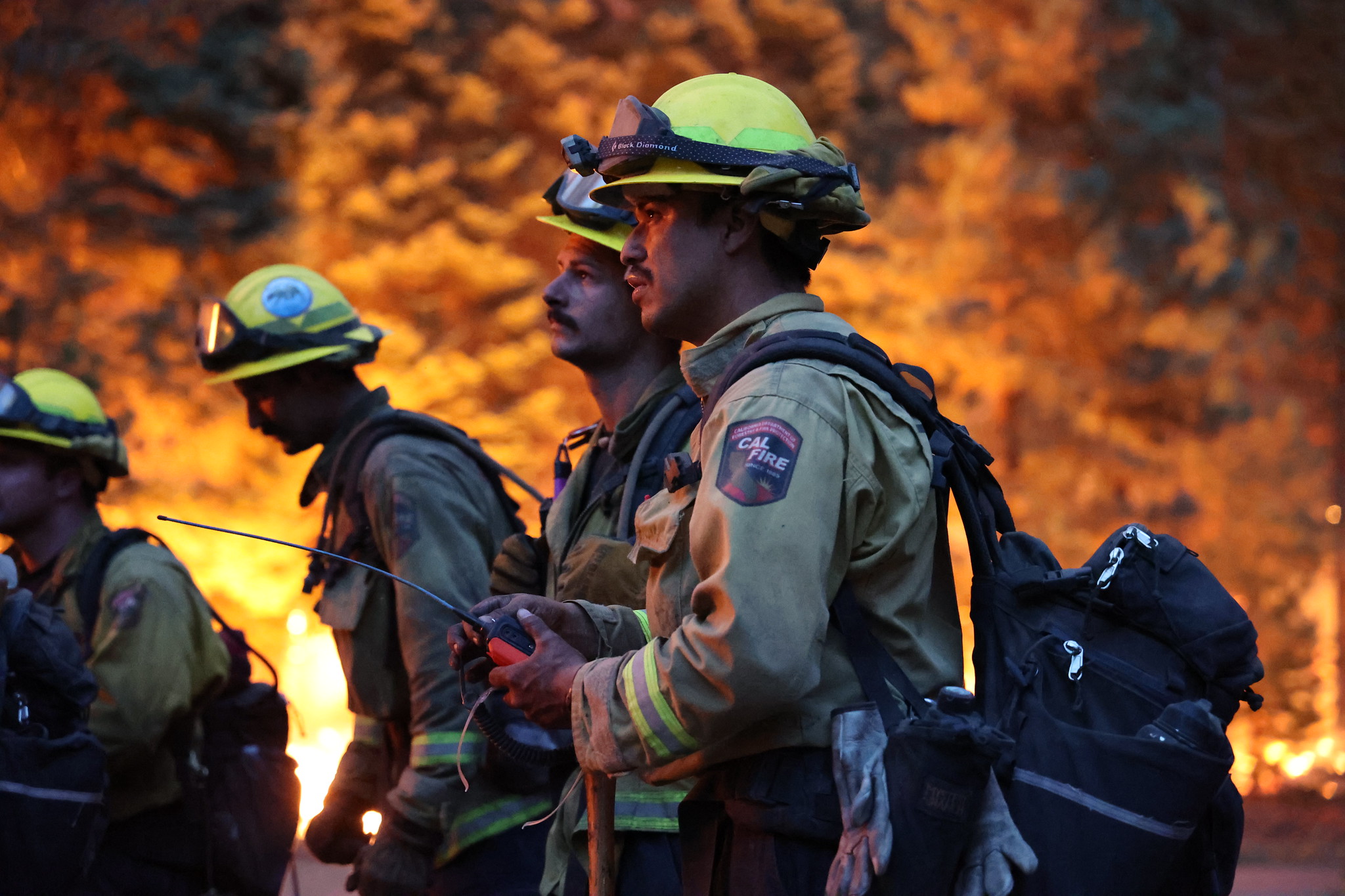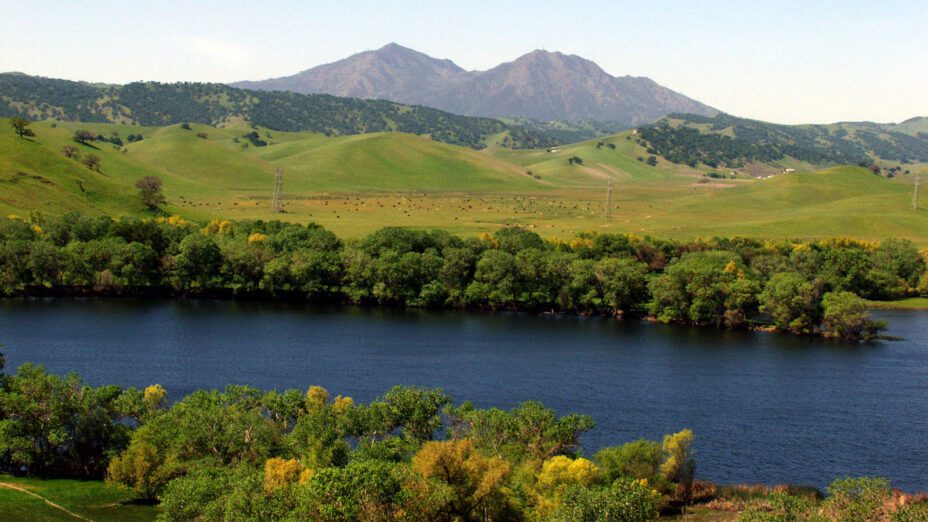
One of our former interns, Floyd McCluhan, recently teamed up with a UC Berkeley professor to write on the effects and consequences of climate change on Mount Diablo State Park.
Nothing had been written prior that focuses so specifically on the mountain through the lens of climate change, so their findings are very interesting.
Background on Climate Change
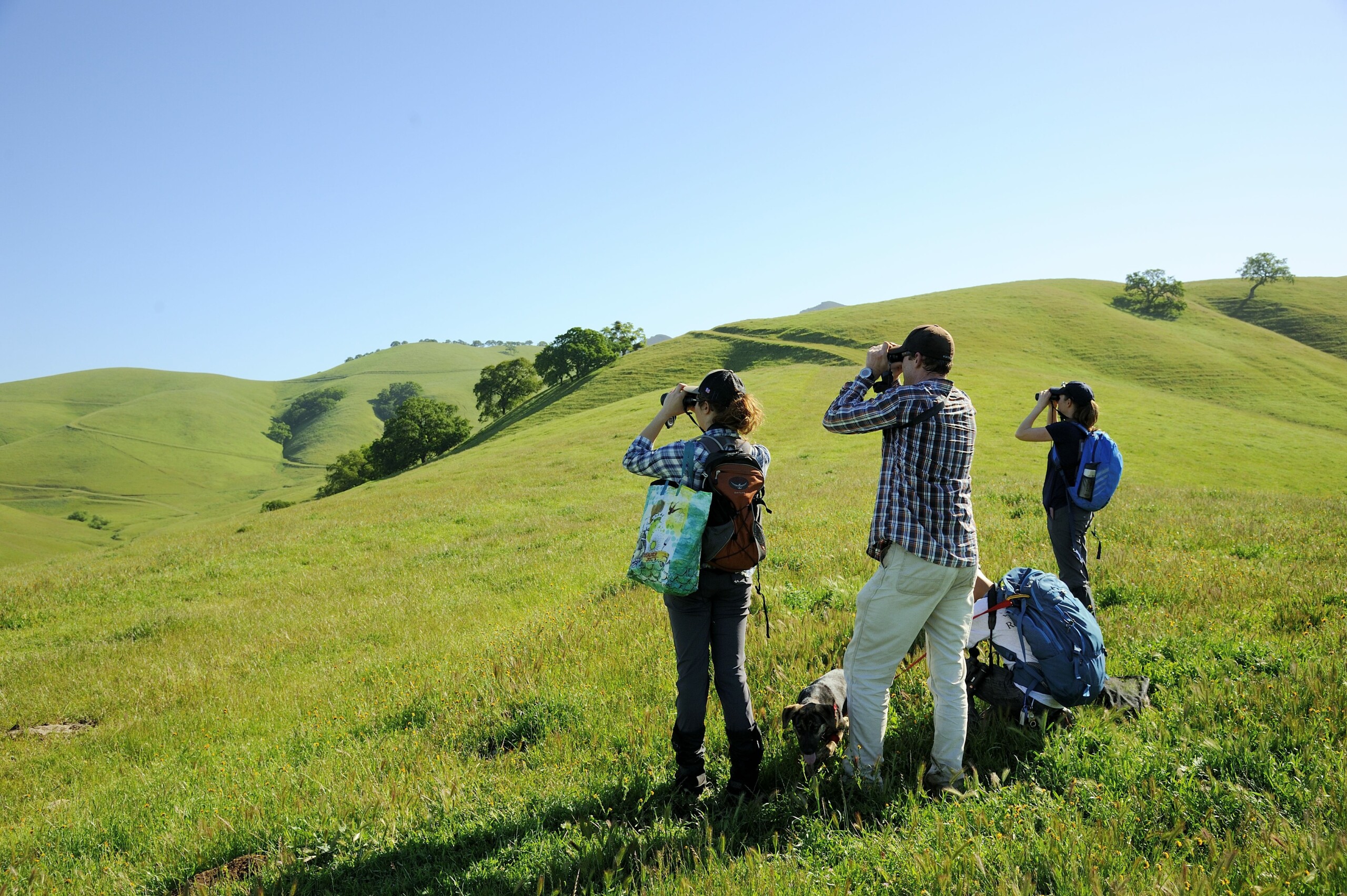
Teaching young people to care for the environment is one of the most important ways to address the climate crisis. Photo by Al Johnson
Carbon pollution because of the burning of fossil fuels is causing huge, rapid changes to mountains, oceans, cities, and even the bodies of plants and animals.
Though change is natural, change happening this fast, and at this massive a scale, is bad for almost all habitats and organisms on Earth, including humans.
We need to change ourselves and our society in a massive way, very quickly. Fortunately, we know how. It’s all a matter of will and putting in the effort.
What Can Be Done about Climate Change?
What can you do? A LOT! And you can do it right now. Getting your electricity from wind and solar; and pressing your city, county, state and national leaders to rise to the occasion for your children and grandchildren are all very important solutions.
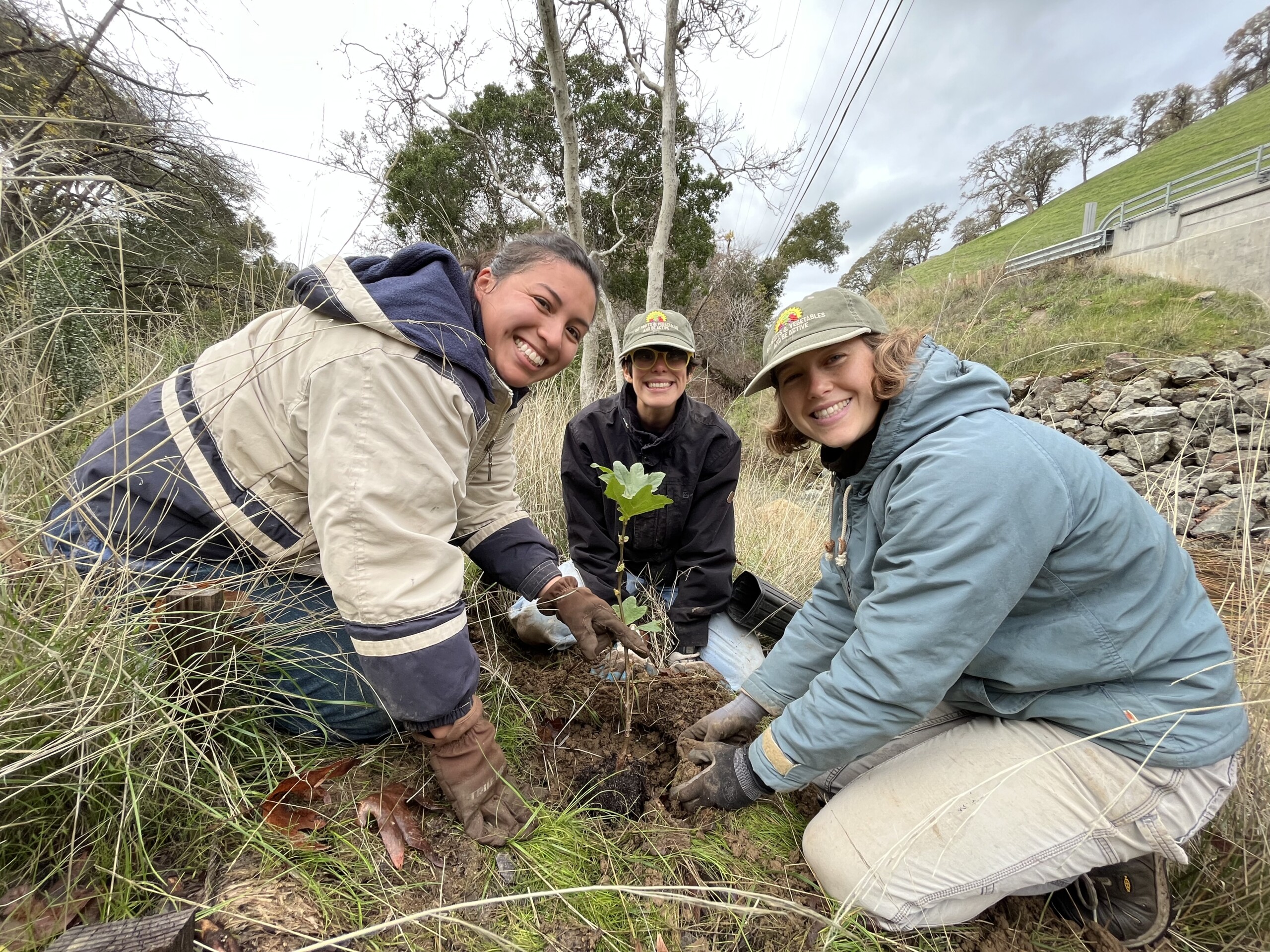
Stewardship staff planting a sycamore tree. Photo by Sean Burke
Supporting efforts to increase educational opportunities for young women around the world, and reducing your consumption of meat, are also essential solutions to the climate crisis we can be a part of right now.
See more solutions in our blog post on contributing to solutions to the climate crisis.
The most important thing is that we act not just as individuals. We need to organize our communities (clubs, friends, family, churches, sports teams, cities, and so on), and take action together.
What Does Your Support Allow Save Mount Diablo to Contribute?
We advocate for good land use policy and fight bad development projects that expand the edges of cities rather than focus development near transit.
Growing “out” adds more carbon pollution and destroys habitat. Growing “up” takes advantage of transit and city services, and spares wildlife habitat.
We restore habitats to make them more resilient to climate change and create climate refugia to help communities of plants and animals withstand climate extremes.
We educate the public and the crucial need to act on the climate crisis now and strengthen the connection between ourselves and nature.
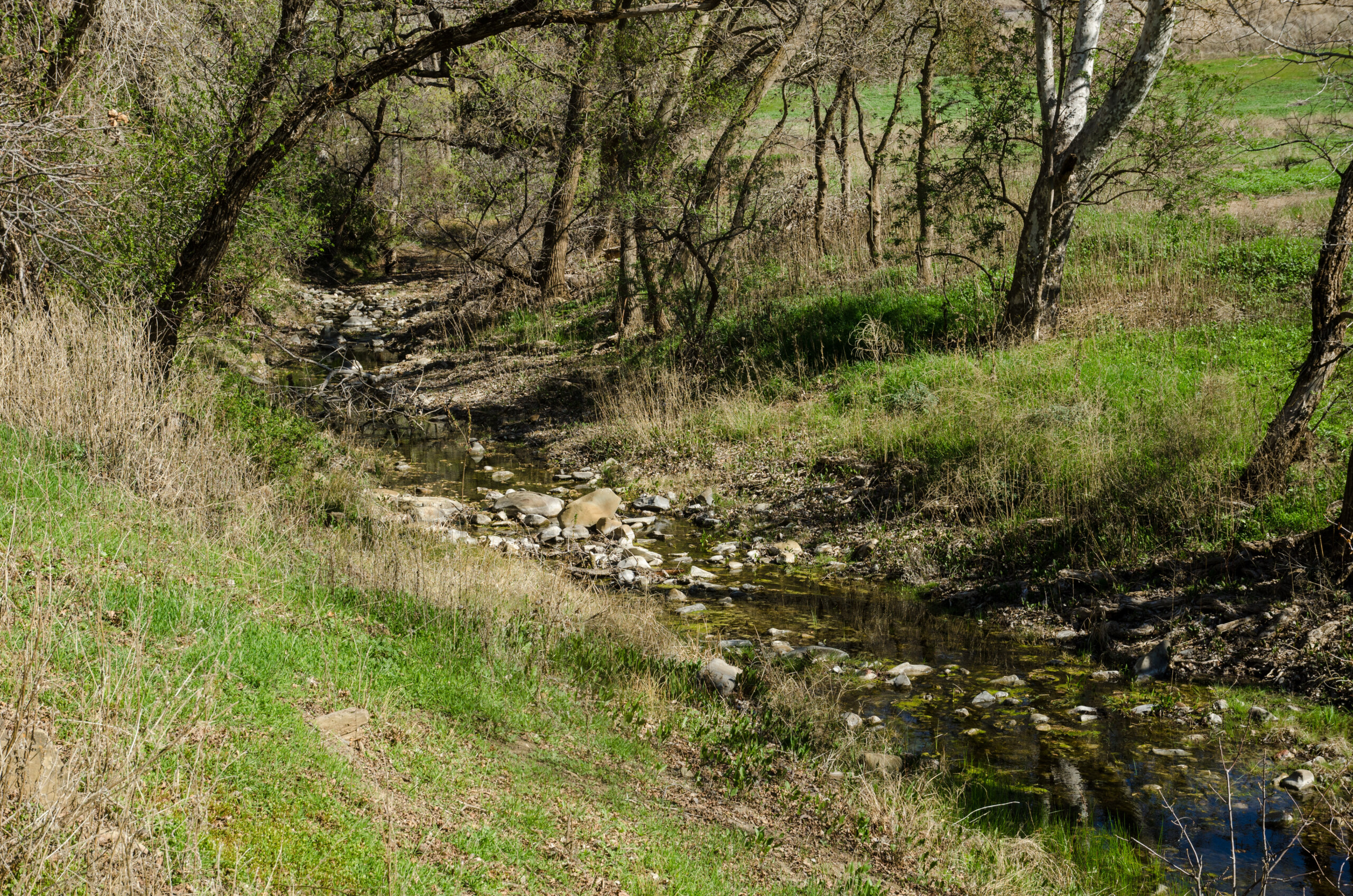
Healthy creeks are crucial for habitat restoration. Photo by Scott Hein
And we are reducing our own climate impacts by seeking climate-smart office space, reducing our staff’s commutes and subsequent carbon pollution, and innovating ways our organization can do more for nature by taking less from it.
Our work also helps maintain the connection between Mount Diablo and the rest of the Diablo Range further south. This north-south habitat connectivity is crucial for plants and animals shifting their range in response to climate change.
Read more in our Climate Action Plan.
Specific Findings for Climate Change on Mount Diablo
Temperature
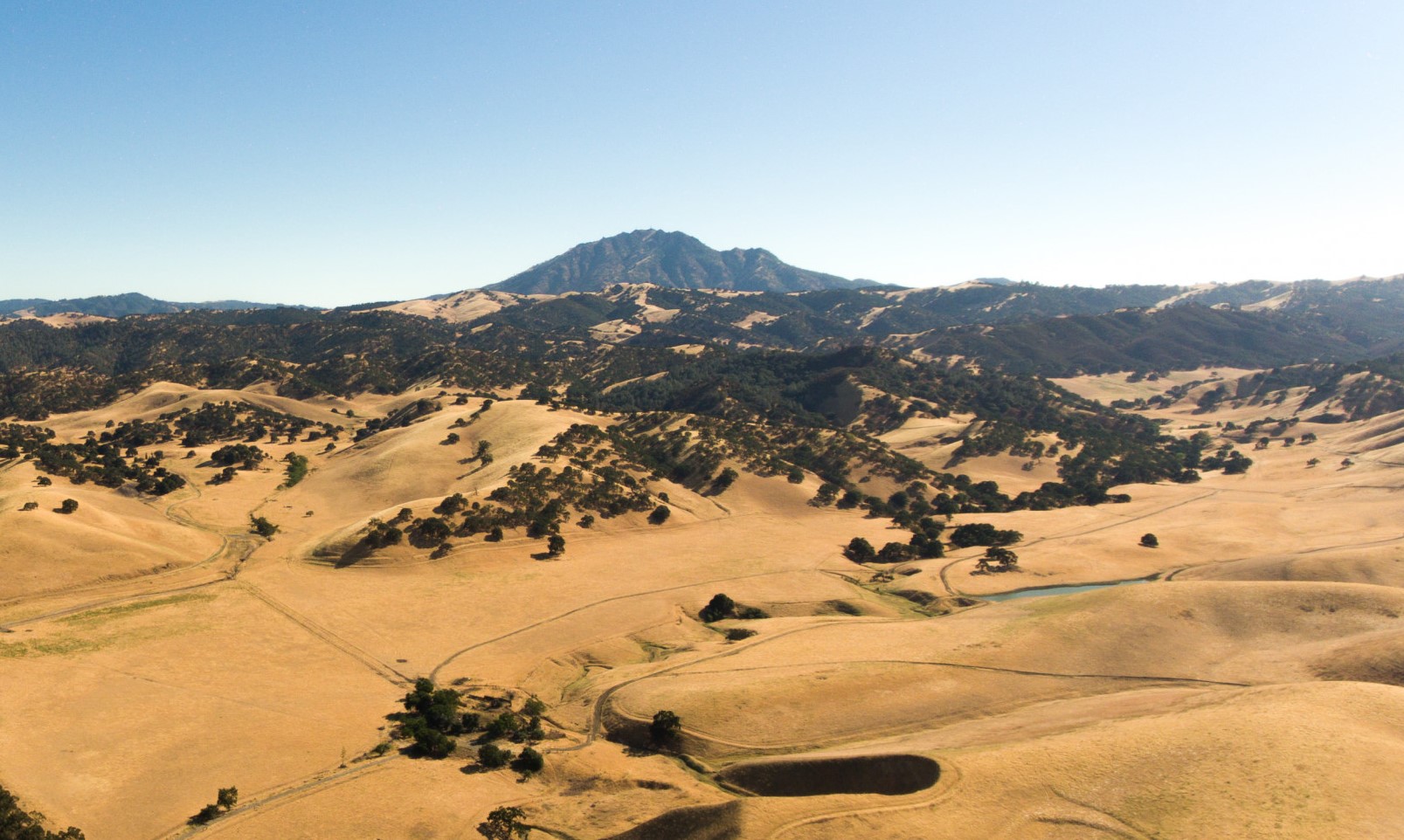
The dry hills of Black Diamond Mines including the Star Mine area with Mount Diablo in the distance. Photo by Cooper Ogden
The average minimum temperature on Mount Diablo has increased 1.95 degrees Fahrenheit (F) compared to the 1950s through 1970s.
For all of Contra Costa County, temperatures are warming up even faster than the park, by 0.2 degrees F each decade since 1895.
What can we expect in the future?
Without huge changes to how we live and operate as a society, minimum and maximum temperatures on Mount Diablo could both warm by or more than 8 degrees F by the end of the century, and between 4.6 to 4.9 degrees F in less than 30 years.
However, if we make massive change and drastically reduce our carbon pollution into the atmosphere, things get better. Maximum and minimum temperature increases could be limited to 5 degrees F by the end of the century.
In addition, if we make huge cuts to carbon pollution now, temperatures will plateau by the end of the century. Then humanity can focus on getting temperatures down.
However, if we don’t reduce carbon pollution right away, even at the end of the century, temperatures will continue to increase.
But it’s not the averages that kill wildlife and humans, it’s the extremes that come along with those averages. Multiple straights weeks of triple digit temperatures in the East Bay in summer.
So when you read about average temperature rise, remember, extreme temperatures and climate events, like wildfire, go along with them.
Wildfire
Between 1972 and 2018, the annual burned area in California increased by about 500 percent.
The five largest wildfires in California history have all occurred since 2018, including the SCU Lightning Complex wildfires.
Those fires burned much of the northern Diablo Range and up to the southern border of Mount Diablo State Park, at Morgan Territory Regional Preserve.
Models indicate that the likelihood of wildfires within Mount Diablo State Park may increase by 10 percent by 2050, and 20 percent by the end of the century.
Rain and Drought
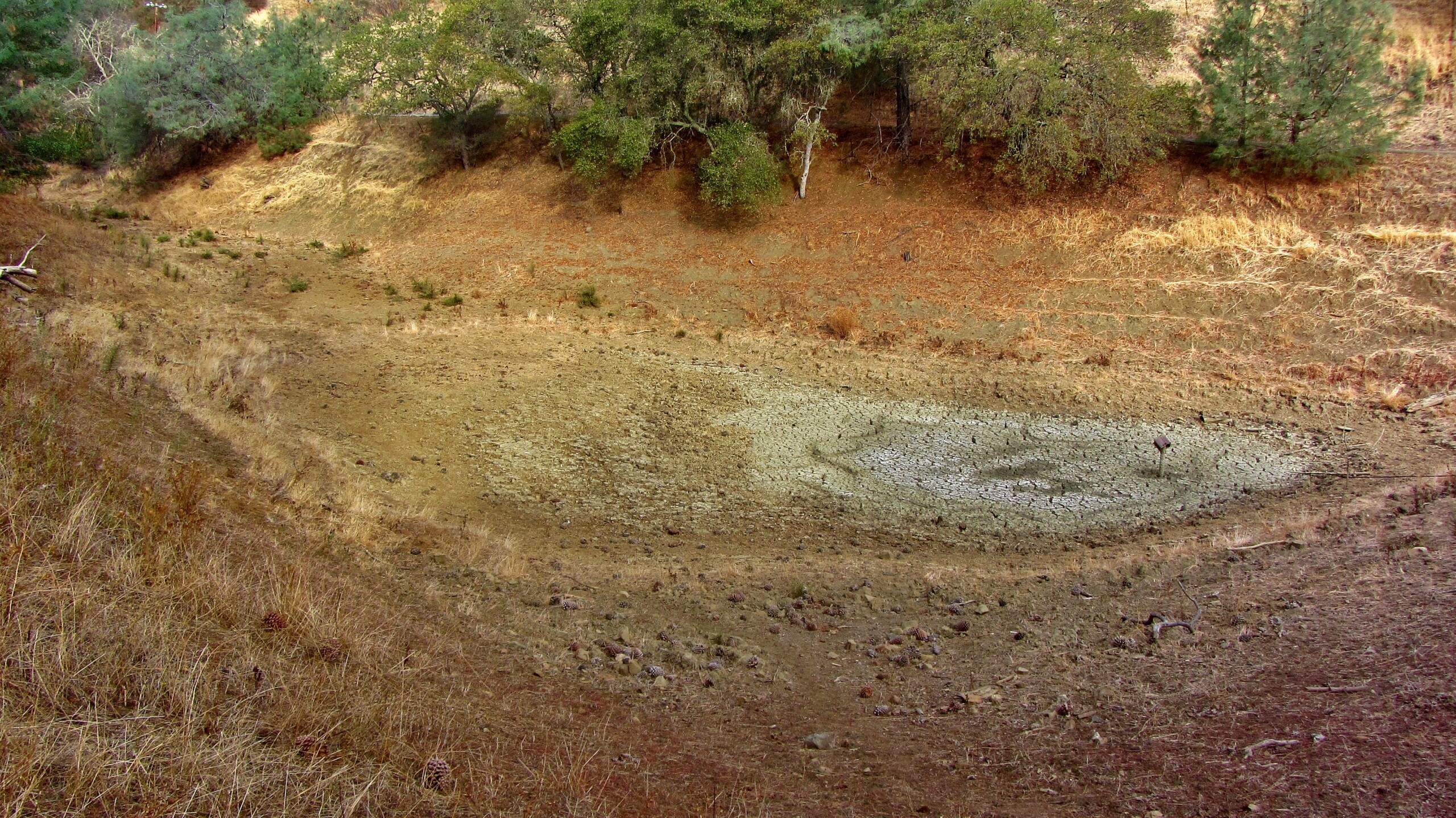
Drought has also affected Mount Diablo’s many ponds. Photo by Brad Heckman
The average annual rainfall on Mount Diablo is 24 inches, with a range from 9 to 47 inches. Because Mount Diablo State Park has such diverse terrain and is fairly close to the coast, rain falls on some places more often than others.
The Mount Diablo summit area experiences about 10 inches more rain than lowland areas of the park. About 90 percent of the rain the park receives falls between November and April, and the mountain receives occasional snow.
There is no statistically detectable difference in rainfall amount changes over the last several decades.
The largest individual storms this area experiences could be larger and more intense, with evidence emerging that storms will make rainfall in the Bay Area more variable.
This variability may create more “whiplash,” where weather swings in a short time between extremely dry to extremely wet periods. For example, we could see flooding when there is still drought.
Current and future temperature increases will raise the likelihood of drought intensity and duration in the state, regardless of rain.
Though drought used to occur every 10 years or so in Contra Costa County, now more widespread and more intense drought seems to be common. Human-caused climate change is making drought more likely and contributing to its intensity and how long it lasts.
Impacts on Plants and Animals of Mount Diablo
Animals and plants are changing where they live, if they can. And some species that harm native plants and wildlife, invasive species, are spreading due in part to climate change.
Research based on Christmas Bird Count Surveys in Contra Costa County between 1975 to 2004 shows that 254 bird species have shifted their winter ranges northward by about 0.3 miles a year, including raptors like the prairie falcon, golden eagle, American kestrel, northern harrier, and red-tailed hawk.
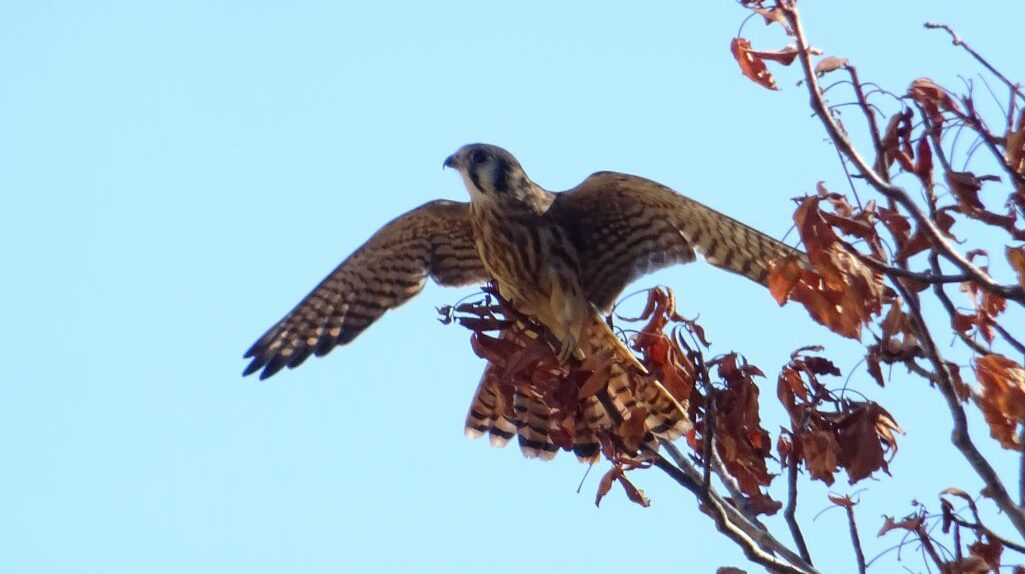
An American kestrel on a branch stretching its wings. Photo by Sean Burke
Forest birds like bushtit and Nutall’s woodpecker are the most susceptible to climate change, while generalists like turkey vulture and mourning dove will find it easier to adapt.
Butterflies in the western US are sensitive to drier and warmer conditions. Many species in northern California are declining, even in relatively undeveloped mountain areas where pesticides aren’t applied much.
There is a 96 percent probability that the total abundance of butterflies is declining, with about 1.6 percent fewer individuals each year.
Climate change could have a negative impact on the San Bruno elfin butterfly (Callophrys mossii bayensis), a federally listed endangered species found in Mount Diablo State Park.
Rare wildlife that we protect on our properties and through our advocacy, like California tiger salamander, California red-legged frog, and northwestern pond turtle, are highly vulnerable to drought.
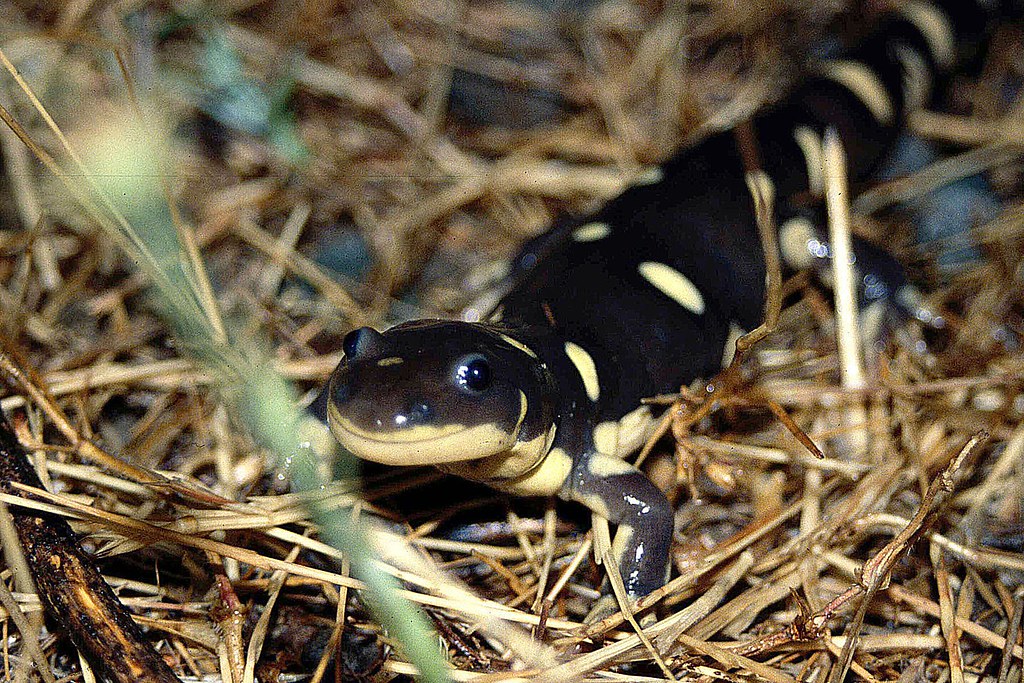
California tiger salamander. Photo: USFWS
The rare Alameda whipsnake’s whole population can also be affected by wildfire, because the only place it is found in the world is in the East Bay. Approximately 70 percent of the Alameda whipsnake population is found in Mount Diablo State Park.
Focusing on plants, research shows that 15 percent of all taxa (species and subspecies) in California have shifted their range upward in elevation. They are seeking out cooler temperate at higher altitudes while the lowlands get hotter.
Twenty-seven percent of non-natives are shifting upward. Only 12 percent of California endemic species have been shown to be moving upslope.
One assessment that analyzed 156 California rare or special-status plant species found 40 that are known to or could potentially occur in Mount Diablo State Park. Researchers determined that six of these are vulnerable to climate change.
These vulnerable plant species include Mount Diablo globe lily (Calochortus pulchellus), round-leaved filaree (California macrophylla), fragrant fritillary (Fritellaria liliacea), dwarf flax (Hesperolinon breweri), Hall’s bush-mallow (Malacothamnus hallii), and most beautiful jewel-flower (Streptanthus albidus ssp. peramoenus).
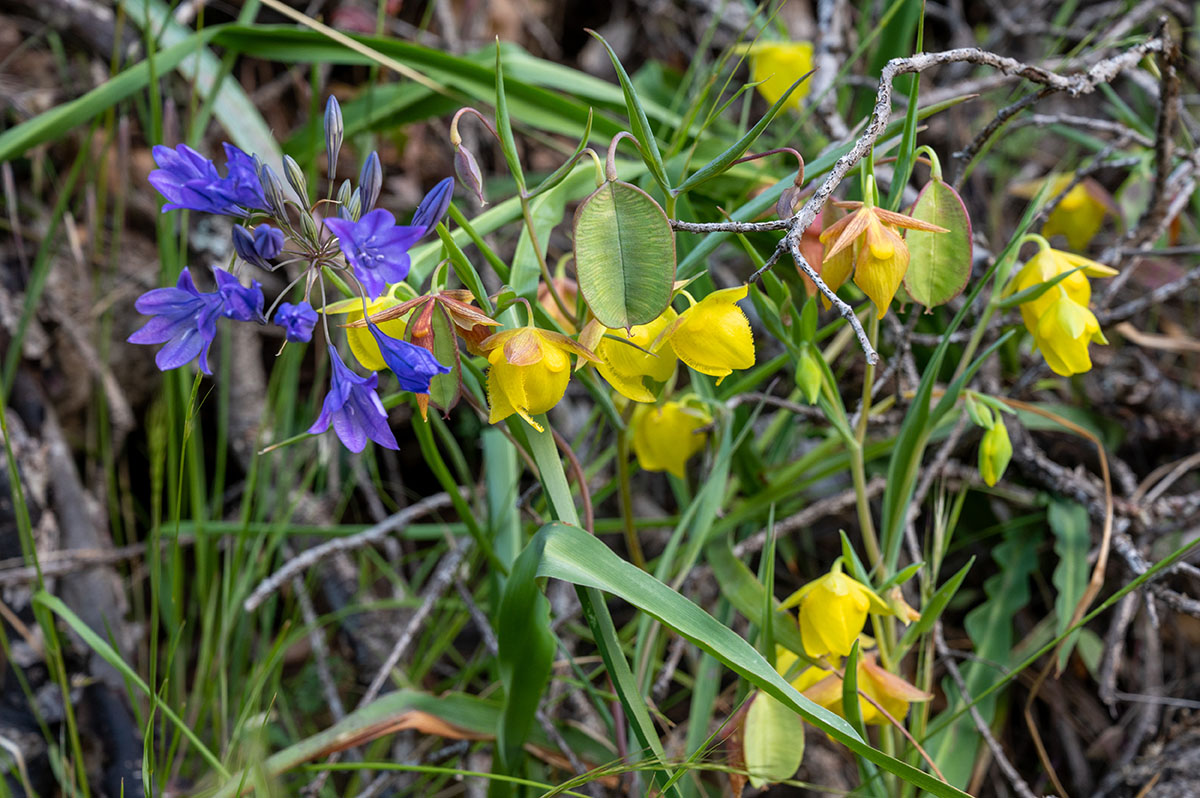
Ithuriel’s spear and Mount Diablo globe lilies in Mitchell Canyon. Photo by Scott Hein
On the other hand, yellow starthistle, one of the most troublesome invasive species and a pest on Mount Diablo, could increase due to climate change.
Want to know more about how climate change affects migratory species and other birds on Mount Diablo, and what you can do to stop climate catastrophe? Watch this video.
Carbon Stored in Mount Diablo State Park
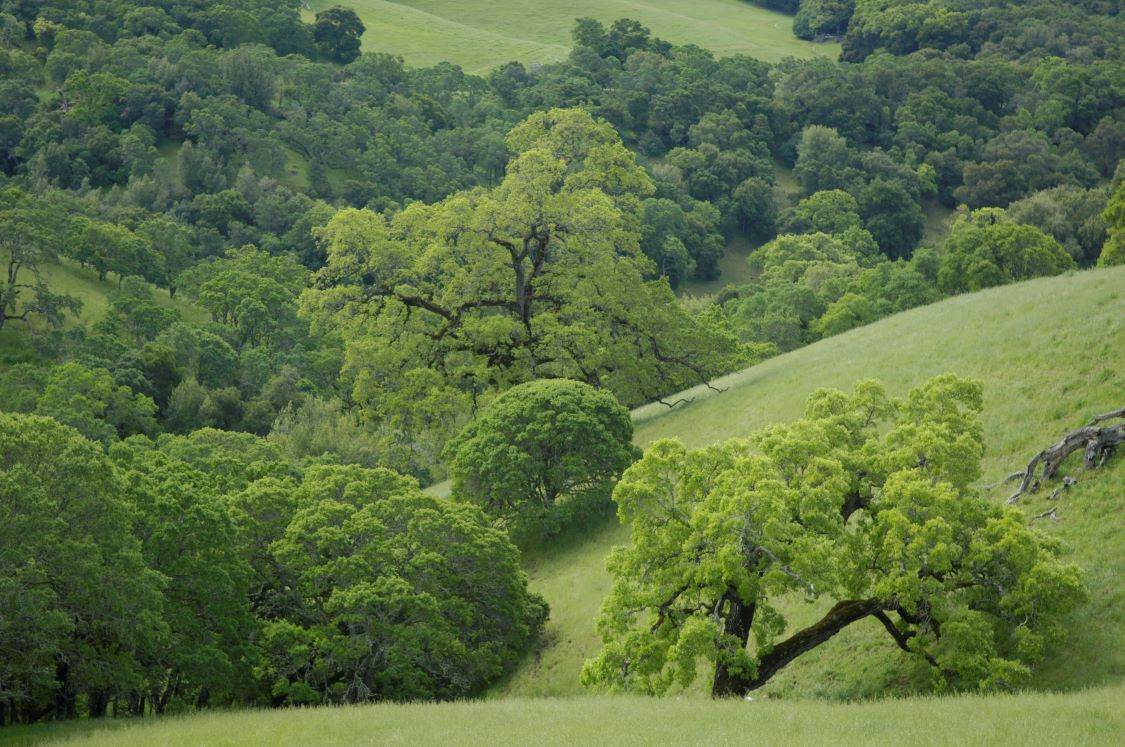
Mount Diablo oak woodland stores a lot of carbon. Photo by Scott Hein
About 210,000 metric tons of carbon in aboveground vegetation is stored in Mount Diablo State Park.
That amount is the equivalent of 790,000 metric tons of carbon dioxide, which equals the annual carbon emissions of about 52,000 North American human residents.
So keeping the carbon found in aboveground vegetation in Mount Diablo State Park locked in the plants instead of sending it up into the atmosphere is like keeping 170,000 cars off the road.
By protecting similar areas from development, we’re helping to keep that carbon out of the atmosphere. Wildfire sends all that carbon up into the air as smoke.
Restoring a natural wildfire regime that prevents catastrophic megafires that burn everything and kill habitat, but encourages more small-scale “good” fire that can revitalize habitats, is a huge challenge. This challenge for the region and state must be solved.
